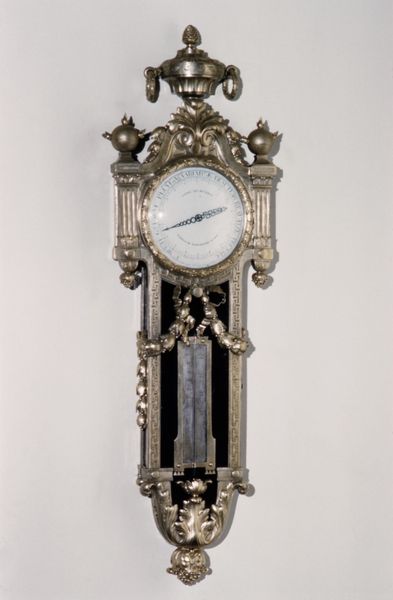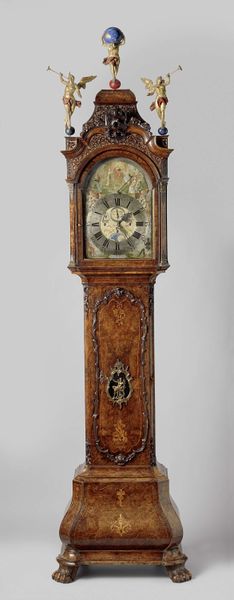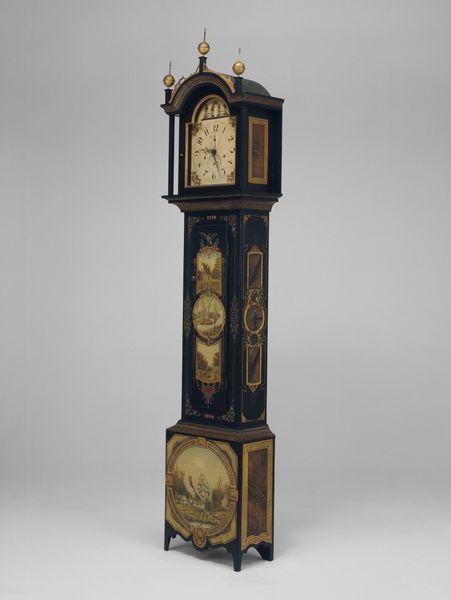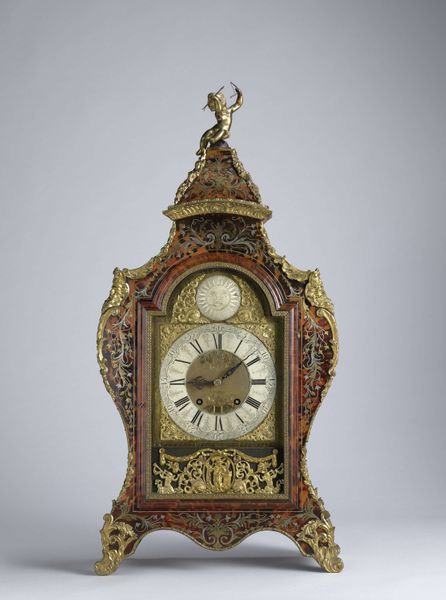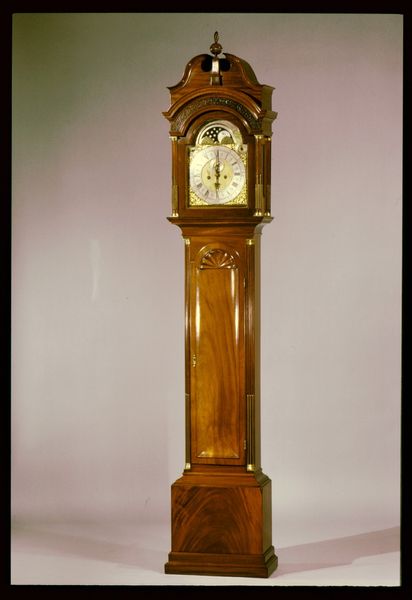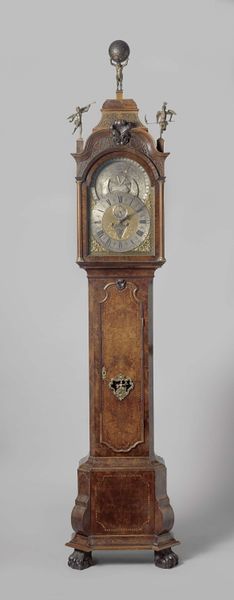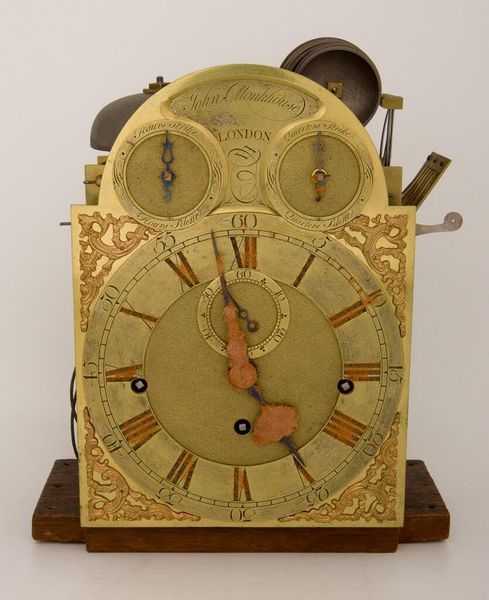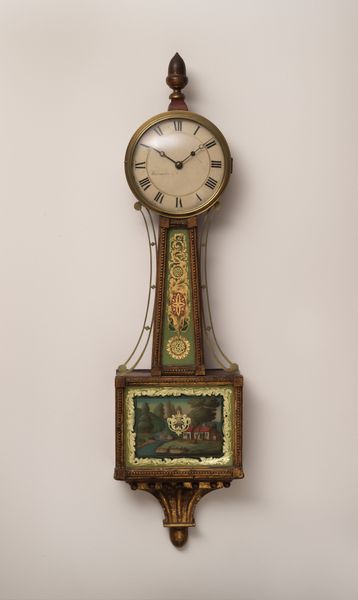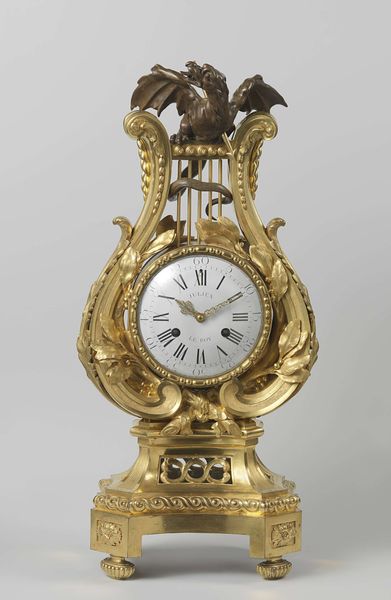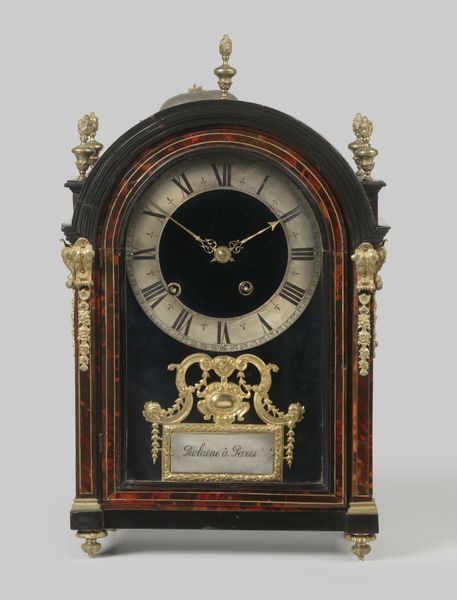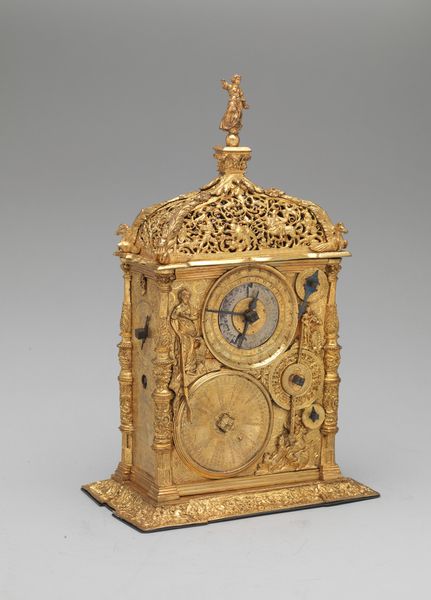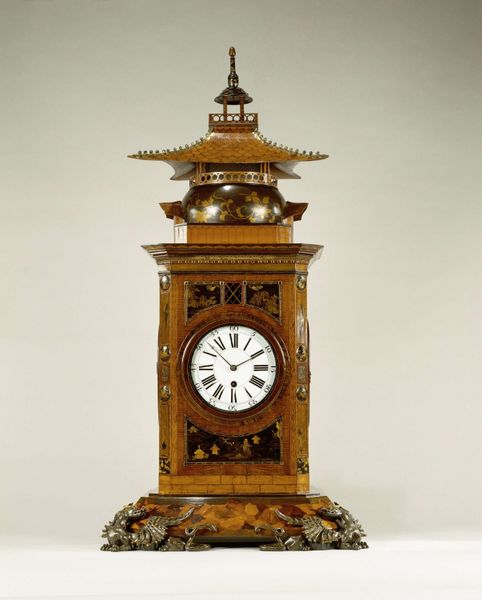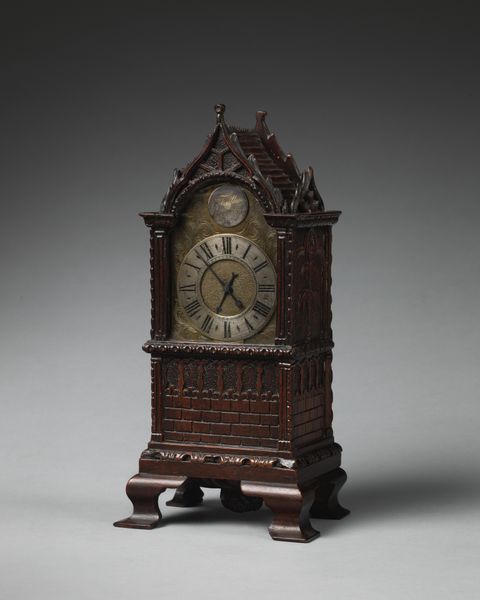
Dimensions: Greatest width: 42.5 x Total L. excluding ropes: 105cm (16 3/4 x 41 5/16in.) c1: 54.6 cm; c2 25.6 cm; c3 12.0 cm.
Copyright: Public Domain
This Musical Clock, made by Martin Vanlo?, provides a portal into the social and cultural values of its time. During the period when such clocks were crafted, timekeeping was becoming increasingly important, influencing the daily rhythms of life in burgeoning urban centers and commercial activities. This clock, with its painted and gilded case, goes beyond mere functionality. The idyllic scene depicted within the clock’s body suggests a longing for pastoral simplicity, a common theme among the elite who often romanticized rural life as an escape from the complexities of urban existence. But we must also consider who had access to such luxuries. Objects like this clock were symbols of status and wealth, enjoyed by a privileged class while the labor of many others made their lifestyle possible. The musical element adds another layer, transforming the clock into a source of entertainment and a display of cultural refinement. How does an object like this, designed to measure time, also reflect the timeless desires for beauty, status, and a connection to an idealized past?
Comments
No comments
Be the first to comment and join the conversation on the ultimate creative platform.
